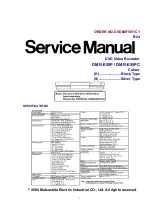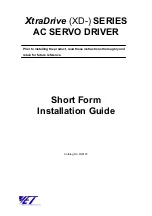
System Manual – MOVIDRIVE® compact Drive Inverters
185
4
1
2
3
4
5
6
7
8
9
10
11
12
13
14
15
16
17
18
19
20
21
22
Description of Applications
Project Planning
Project planning
for hoists
In practice, hoists are dimensioned by taking account of special thermal and safety-rel-
evant criteria.
Thermal
considerations
In contrast to trolleys, hoists require approx. 70 to 90 % of the rated motor torque as-
suming constant speed upwards or downwards and the standard configuration.
Starting torque
The highest operating torque is required for acceleration with maximum load in the UP-
WARDS hoisting direction.
VFC&HOIST
The 4-pole gearmotor should always be selected for a maximum speed of 2100 1/min
(70 Hz) with a transition speed of 1500 1/min (50 Hz) and 2500 1/min (83 Hz) with a tran-
sition speed of 1800 1/min (60 Hz). This means the input speed of the gear unit is ap-
prox. 1.4 times higher. This is why you have to select a 1.4 times higher gear unit reduc-
tion ratio. This measure means that no torque is lost on the output shaft in the field weak-
ening range (50...70 Hz or 60...83 Hz), because the higher gear ratio compensates for
the inversely proportionate fall in torque in relation to speed (frequency). Furthermore,
the startup torque is 1.4 times greater in the range from 0 ... 1500 1/min (0 ... 50 Hz) or
0 ... 1800 1/min (0 ... 60 Hz). Further advantages are that the speed range is greater and
the self-cooling of the motor more powerful.
The motor power for hoists is selected according to the load type.
•
S1 (100 % cdf): Motor power of next higher motor type than the selected inverter
power, e.g. for lengthy upwards travel or continuous elevators.
•
S3 (40 % cdf): Motor power in accordance with the selected inverter power.
The hoisting function must be activated on the inverter regardless of the above guide-
lines. See also "Motor selection examples" on page 190.
Encoder
monitoring
MOVIDRIVE
®
compact
has encoder monitoring for TTL sensors, sin/cos and Hiper-
face
®
encoders (only MCH). There is no encoder monitoring for HTL sensors.
Variable torque
load (pumps,
fans)
Thermal overload of the motor at low speeds can be ruled out in these applications.
Maximum load occurs at the maximum speed; overload peaks do not occur. As a result,
MOVIDRIVE
®
and the motor can be dimensioned so the continuous motor current is
less than or equal to the continuous output current (VFC operating mode, 125 % of the
rated output current at f
PWM
= 4 kHz) of the MOVIDRIVE
®
unit. This means the
MOVIDRIVE
®
unit can operate a motor with the power of the next higher motor type.
See also "Motor selection examples" on page 190.
04949AEN
Figure 57: a = Recommended voltage/speed characteristic curve and resultant torque profile
0
0
0
0
1500
(1800)
2100
(2500)
1500
(1800)
2100
(2500)
a
a
a
a
1.0
M/M
N
1.4
n
[rpm]
n
[rpm]
V
max
V
Mot
Torque reserve range
n
base
NOTE
For speed controlled hoist drives, SEW-EURODRIVE recommends using TTL sensors
or sin/cos encoders and activating encoder monitoring.
Avoid using an HTL sensor if possible.
Содержание MOVIDRIVE compact MCH41A
Страница 2: ...SEW EURODRIVE Driving the world...
Страница 432: ......
















































